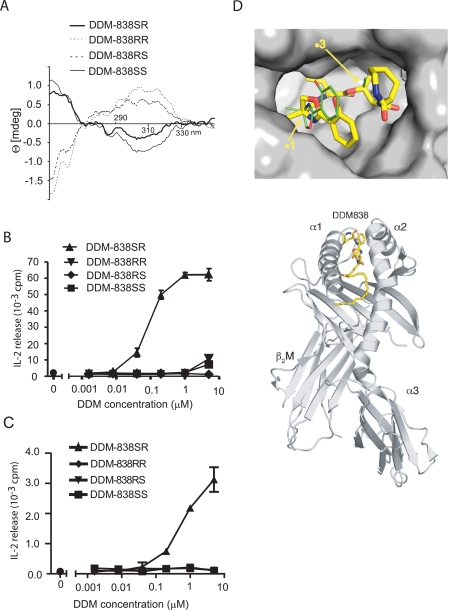FIGURE 5.
Stereocenters near each end of the peptide moiety control T cell activation. A, circular dichroism spectra acquired for the DDM synthetic analogs show a polar difference for compounds that were predicted to vary in stereochemistry in the oxazoline moiety at the *1 stereocenter, which is part of the oxazoline ring chromophore, confirming that input compounds (supplemental Fig. S9) were not racemized during synthesis. B and C, T cell responses to DDM-838 stereoisomers were compared in assays using intact dendritic cells expressing CD1a (B) or recombinant CD1a proteins bound to plastic plates (C). D, based on a prior crystal structure of CD1a bound to a DDM-like synthetic compound (21), this molecular model was prepared with a molecular surface corresponding to DDM-838SR. Top (upper panel) and side (lower panel) views show the predicted position of DDM-838SR in the CD1a groove with arrows indicating the predicted locations of the stereocenters that affect T cell response. The binding groove is depicted as a molecular surface with negative (red) and positive (blue) electrostatic potentials. (The alternate DDM-838RS configuration was also modeled and is shown as thin green lines.)

